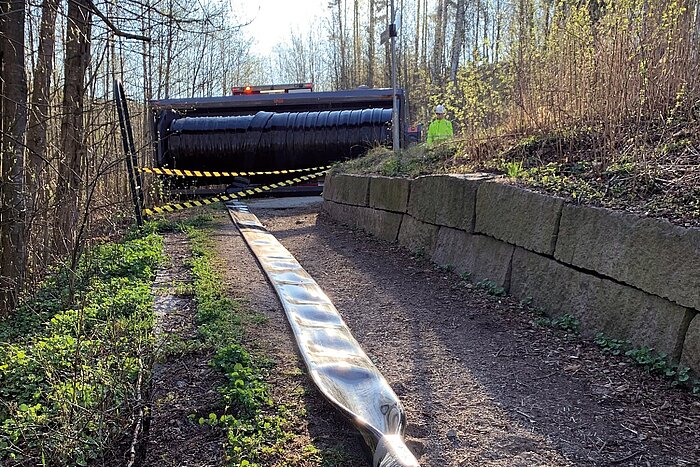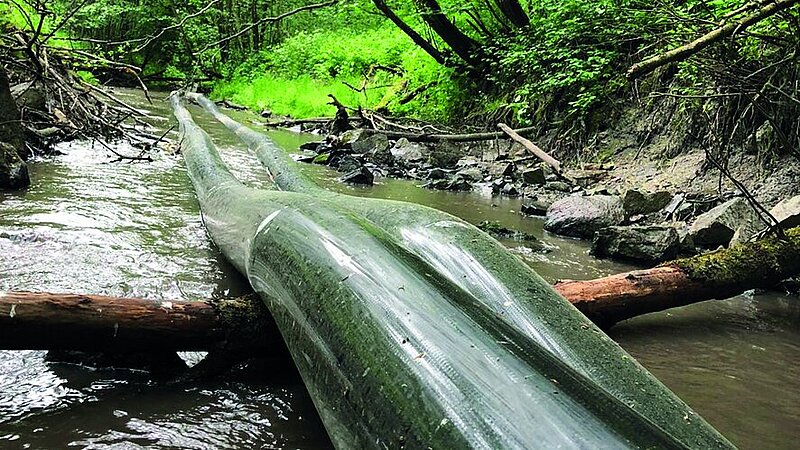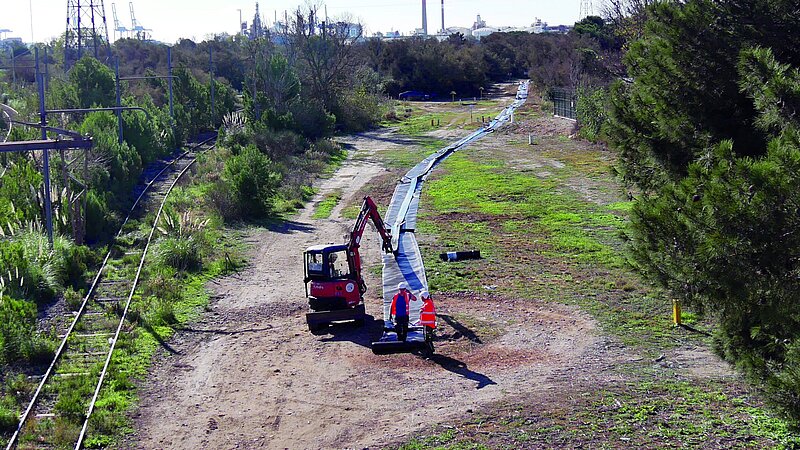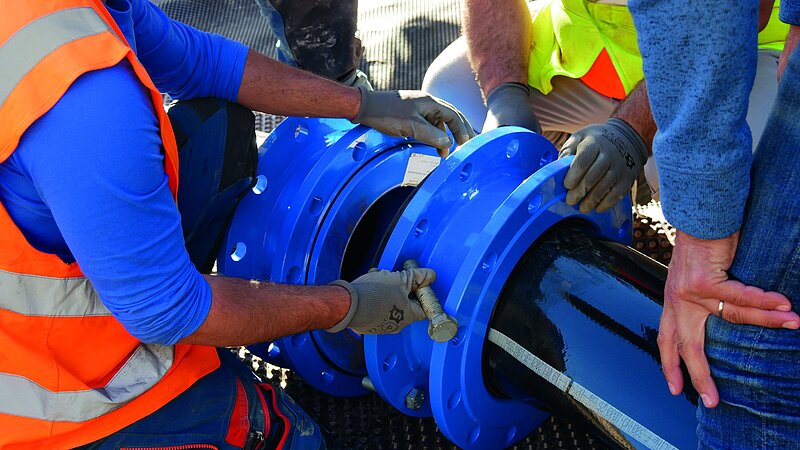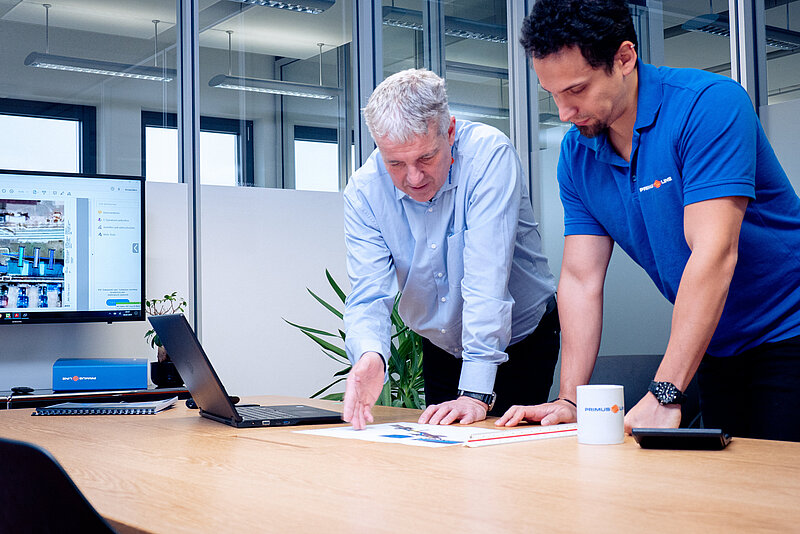Whether as a bypass during rehabilitation work on a pipeline whose operation must nevertheless continue, or as a pipeline for the temporary above-ground transport of large quantities of fluids in the oil and gas industry: Primus Line® Overland Piping is a safe and reliable solution of these cases. As different as the fields of application are, Primus Line® Overland Piping – consisting of a flexible pipeline and special connectors – convinces customers with the following benefits:
Safety
Both the inner and outer layers of the high-pressure pipeline are made of thermoplastic polyurethane (TPU). These two layers are reinforced by a core of seamlessly woven aramid. This synthetic fibre impresses by its strength: It is five times higher than that of steel and twice that of glass fibre or nylon. The aramid fabric makes the pipeline flexible and, in combination with the TPU layers, safe at the same time: Based on the standard API 15LF, the burst pressure is at least two and a half times higher than the permissible operating pressure. Its three-layer structure with the resulting resistance distinguishes Primus Line® Overland Piping from other systems, leads to a generally longer service life and ensures operation without leakage and environmental damage.
The resistance of the flexible pipeline also allows the Overland Piping system to be installed and operated at very low temperatures. It does not corrode and is protected from UV radiation by its black outer layer.
Leakproof end connectors complete the Primus Line® Overland Piping system. During installation, the assembly teams do not have to weld or handle hazardous materials.
The fact that the entire production process of the flexible pipeline is consistently monitored also contributes to safety. Sensors and cameras continuously capture the process parameters which form the basis for extensive control mechanisms for wall thickness and strength. Furthermore, each manufactured flexible pipeline undergoes a pressure test at the factory before delivery to the construction site.
Costs
Primus Line® Overland Piping can be reused several times. Depending on the diameter, up to 14,700 feet of flexible pipeline are delivered to the installation site on a single reel. In combination with the product’s low dead weight, this saves storage and transport costs. The same amount of HDPE pipes requires about ten times more space. Compared to HDPE, the flexible pipeline exceeds the break-even point in terms of costs after only a few applications.
Efficiency
As with all Primus Line products, installation lengths of up to 3,300 feet and more in one piece as well as multiple changes of direction are possible. The long lengths significantly reduce the number of joints – and thus potential weak points. Due to its flexibility, the pipeline adapts to the surface of the terrain.
The flexible pipeline handles large flow volumes of up to 132 gallons per second. It is laid directly from the reel to the ground using a winch, truck or mini-excavator. In contrast to HDPE pipes, installations of up to 19,700 feet per day are possible. The assembly team sets the connectors on site with hand-held tools.
Eco-friendliness
Primus Line® Overland Piping is installed with little equipment, either – as already mentioned – with a winch, truck or mini-excavator. This significantly reduces the carbon footprint on site. Heavy equipment is not required.
Sensitive and protected areas such as nature parks or river courses are not affected by installing the Primus Line® Overland Piping system.
